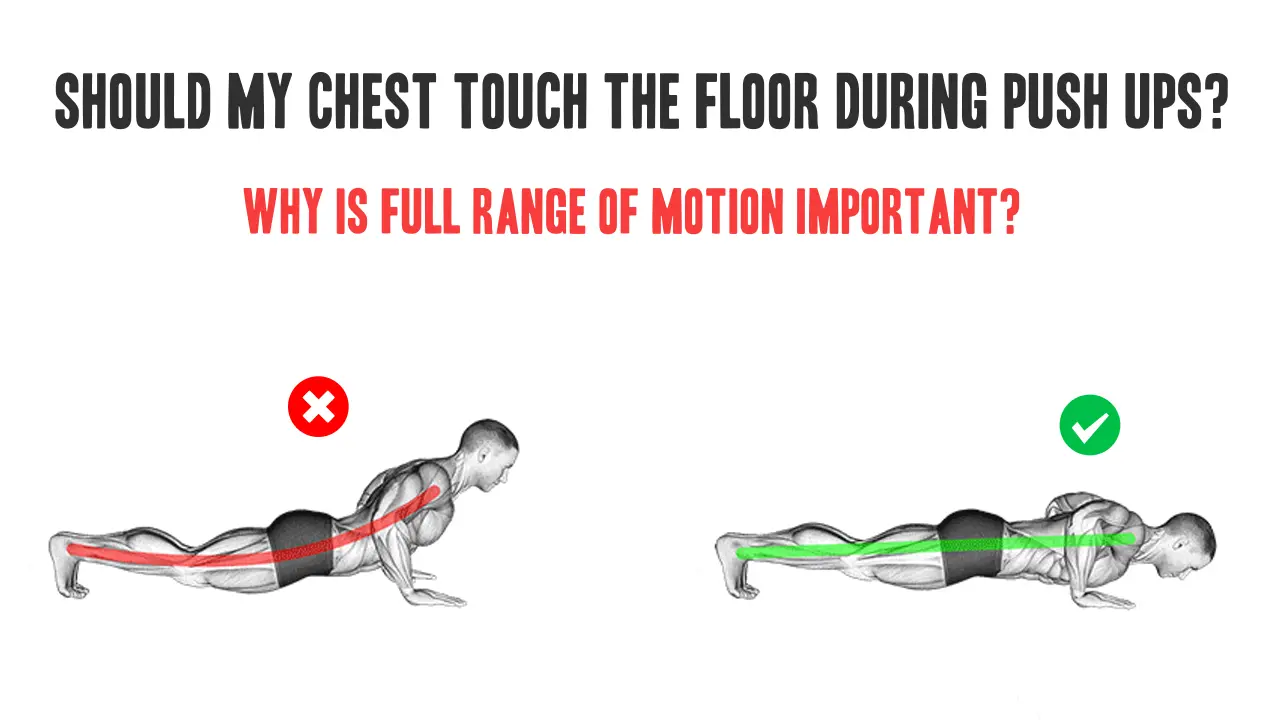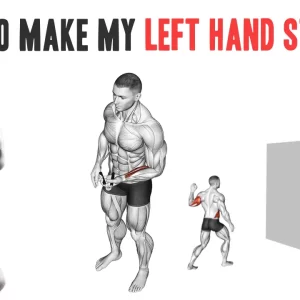Contents
Push-ups are a foundational exercise that many people incorporate into their workout routines. They’re simple yet effective, targeting multiple muscle groups including the chest, shoulders, triceps, and core. However, there’s often debate about whether your chest should touch the floor during push-ups. So, is your body supposed to touch the ground during push ups? Let’s dive into this topic and explore the factors to consider when performing this exercise.
Why is full range of motion important in push-ups?
In a perfect push-up, you want a full range of motion. This means lowering your body until your chest touches the floor. Here’s why:
- Maximizes Muscle Engagement: A full range of motion allows you to engage a greater number of muscle fibers throughout the movement. When you lower your body until your chest touches the floor during push-ups, you activate not only the primary muscles involved (chest, shoulders, and triceps) but also stabilizing muscles in the core and upper back.
- Improves Strength Gains: By reaching a low position, you put your muscles under greater stress, promoting strength building.
- Flexibility and Mobility: Performing exercises with a full range of motion helps improve flexibility and mobility in the joints. Over time, this can enhance overall movement quality and reduce the risk of stiffness or discomfort, both during workouts and in daily activities.
Should my chest touch the floor during push ups?
In a perfect push-up with ideal mobility, yes, your chest can graze the ground momentarily. Lowering yourself until your chest lightly touches the floor ensures that you’re utilizing the full potential of the exercise, activating a greater number of muscle fibers in the chest, shoulders, and arms. This full range of motion maximizes muscle engagement and leads to a more effective workout.

While lowering yourself until your sternum nears the ground maximizes pectoral muscle engagement through a full range of motion, this approach isn’t a universal decree. For individuals with limitations in shoulder mobility, forcing a deep descent can place undue stress on the shoulder joint, potentially leading to pain and dysfunction.
Prioritize Form Over Depth
The most crucial factor is proper form. Here’s the golden rule:
- If you can comfortably lower yourself with your chest nearly touching the ground while maintaining impeccable form (think straight back, elbows tucked close to your body) [1], then that’s the sweet spot! You’re reaping the maximum benefit from the exercise.
- If going all the way down puts strain on your shoulders, prioritize stopping just before your chest touches the floor. Focus on keeping your core engaged and your body in a straight line throughout the movement. Remember, a well-executed push-up with slightly less depth is superior to a shallow push-up that compromises your form and risks injury.
Optimizing Push-Up Technique
Regardless of depth achieved, prioritizing proper form throughout the push-up remains paramount. Here’s a closer look at key aspects of push-up technique:
Core Strength is Paramount: Your core acts as a bridge between your upper and lower body during push-ups. Engaging your core throughout the movement stabilizes your spine and helps prevent injuries. Imagine drawing your belly button towards your spine to achieve core activation. Focus on maintaining a straight line from head to heels throughout the push-up.
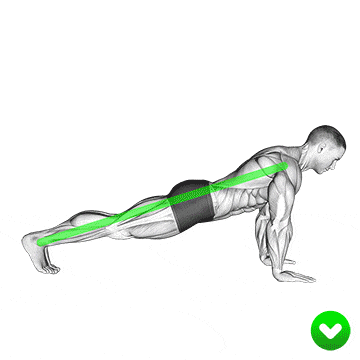
Elbow Position Matters: While lowering yourself, keep your elbows tucked in close to your sides, rather than flaring them out. This puts less strain on your shoulders and strengthens your triceps more effectively. Think of your upper arms as hugging your ribs throughout the movement.

Controlled Movement is Essential: Don’t just drop down during the lowering phase. Descend with control to maximize muscle engagement. Push back up with equal control and explosiveness.
For an extra edge, focus on actively engaging your chest muscles throughout the push-up motion. This mind-muscle connection not only enhances form but can also optimize the effectiveness of each push-up. Imagine squeezing your chest muscles as you lower yourself down and then explosively pushing back up to the starting position.
A smooth and controlled push-up is far more beneficial than a jerky or rushed one.
Easy Variations: Build a Strong Foundation
Struggling to achieve a full push-up? Don’t worry! Here are valuable modifications to consider:
Incline Push-Ups:
These are a great way to build upper body strength before transitioning to full push-ups. Performed with hands elevated on a bench or sturdy object, they offer a more manageable starting point. Start with a higher incline and gradually decrease it as you get stronger.
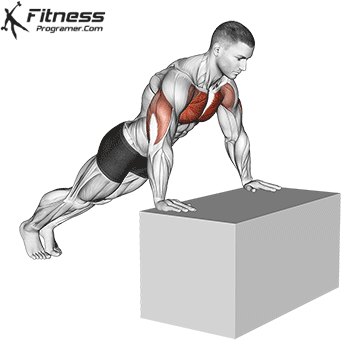
Knee Push-Ups:
Done on your knees instead of toes, knee push-ups provide a valuable option for beginners or those recovering from injuries. They allow you to focus on proper form and core engagement before increasing the difficulty. Focus on maintaining a straight line from head to knees and keeping your core tight.
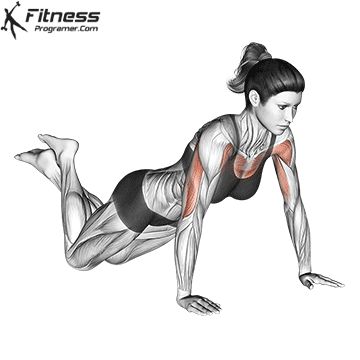
Think of incline and knee push-ups as stepping stones on your push-up journey. As you perform these variations with proper form, you’ll be strengthening the muscles that support your shoulders and developing better overall pushing mechanics. This strong foundation will allow you to gradually progress towards deeper push-ups without compromising form.
Difficult Variations
Having conquered the foundational push-up variations, you might be ready to push your limits and explore more challenging variations. Here are two options to elevate your push-up game:
Resistance Band Push-Up:
This variation adds an extra layer of difficulty by incorporating a resistance band. Here’s how to perform it:

- Loop a resistance band around your upper back, just below your shoulder blades. Hold the ends of the band in your hands with a regular push-up hand position.
- Perform a standard push-up. The resistance band will provide additional tension throughout the movement, increasing the challenge for your chest, shoulders, and triceps.
Push-Up with Push-Up Bars:
Push-up bars elevate your hands, increasing the range of motion in the push-up. This variation places greater emphasis on your shoulders and triceps.
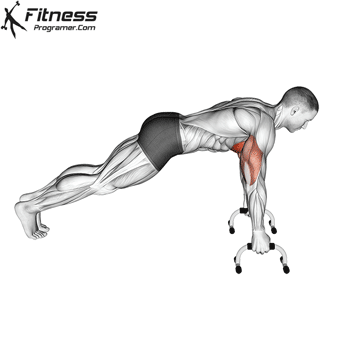
- To perform this variation, place your hands on the push-up bars shoulder-width apart.
- Lower yourself down with a controlled movement, keeping your elbows close to your body.
- Push back up to the starting position, maintaining a straight line from head to heels.
What’s Right for You?
Remember, the key to effective push-ups lies in proper form and gradual progression. Don’t be tempted to force your chest down if it compromises your form.
- New to Push-Ups? Start close-to-floor and progress to deeper depths as you gain strength.
- Shoulder Issues? Opt for a comfortable depth that avoids pain.
- Unsure? Consult a certified trainer for personalized guidance.
The Bottom Line
Listen to your body, utilize modifications when needed, and focus on quality repetitions. By following these steps, you’ll be well on your way to mastering the push-up and reaping its numerous fitness benefits. Push-ups are a fantastic exercise for building upper body strength, core stability, and overall functional fitness. By incorporating them into your workout routine with proper form and progressive overload, you’ll be well on your way to achieving your fitness goals.

